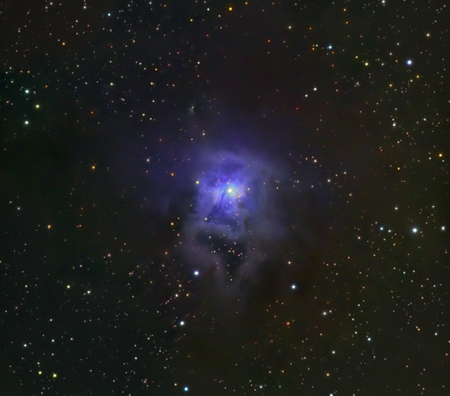NGC 7023. 'The Iris nebula'.
This lovely reflection nebula lies in the constellation of Cepheus, and
is illuminated by the central star, SAO 19158, which is magnitude +6.8.
For me, it's one of the few objects that actually looks like its name….a
flower, not a part of your eyeball!
It is between 1300 & 1400 light years away, and the bright part is
about 6 light years across.
This means that the light we see now left the Iris nebula between 600
and 700AD.
Looking at what was happening around the world at that time, Chess was
invented in India, use and development of the steel plough and oxen yoke
increased food production more than the use of fertilisers in the 20th
century, the Tang dynasty was founded in China, Mohammed was busy founding
and establishing Islam, Christianity was on the rise in Europe, and world
population is estimated to have been between 200-210 million.
Click on image below for full size version
Telescopes. TMB 152
William Optics ZS80FD
Cameras. SXVF H16
Atik 16HR
Luminance. 20 x 8 minutes. Atik 16HR (inner nebula)
15 x 1 minute. Atik 16HR (core only)
25 x 8 minutes. SXVF-H16.(outer nebula and starfield)
Red. 12 x 6 minutes
Green. 12 x 6 minutes 40 seconds
Blue. 12 x 8 minutes.
RGB captured with a William Optics ZS80FD & Atik 16 HR.
16HR data registered to the SXV data using Registar.
16 HR luminance data captured on 18/09/2009
SXV luminance & 16HR RGB captured on 25/09/2009
Total imaging time. 10 hrs 23 minutes.
This was an early experiment with the dual scope rig, and there's probably
another 5 or 6 hours of data that didn't get used that was gathered with
the SXV on the William optics scope.
